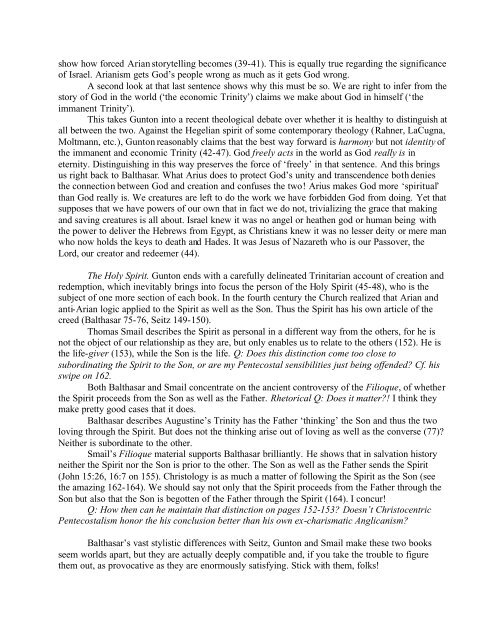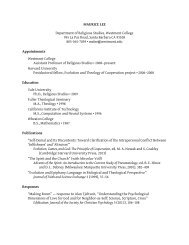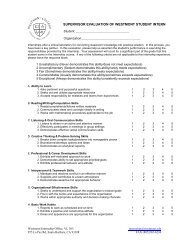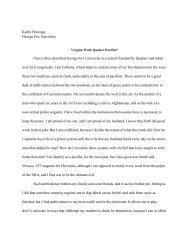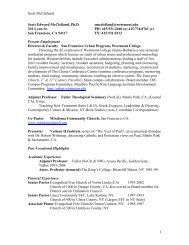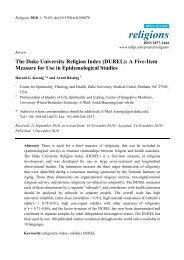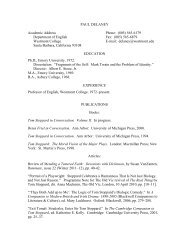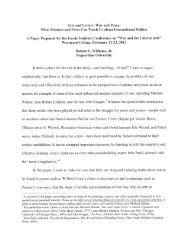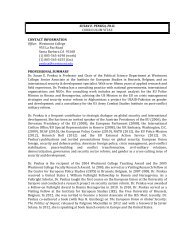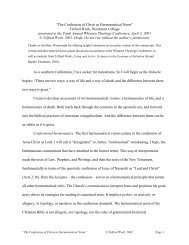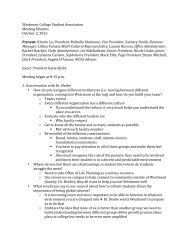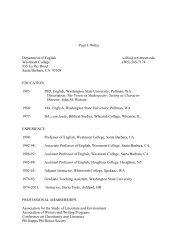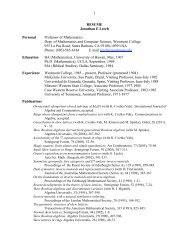Hans Urs von Balthasar, Credo, chapters 1, 2, 10 Telford Work ...
Hans Urs von Balthasar, Credo, chapters 1, 2, 10 Telford Work ...
Hans Urs von Balthasar, Credo, chapters 1, 2, 10 Telford Work ...
Create successful ePaper yourself
Turn your PDF publications into a flip-book with our unique Google optimized e-Paper software.
show how forced Arian storytelling becomes (39-41). This is equally true regarding the significanceof Israel. Arianism gets God’s people wrong as much as it gets God wrong.A second look at that last sentence shows why this must be so. We are right to infer from thestory of God in the world (‘the economic Trinity’) claims we make about God in himself (‘theimmanent Trinity’).This takes Gunton into a recent theological debate over whether it is healthy to distinguish atall between the two. Against the Hegelian spirit of some contemporary theology (Rahner, LaCugna,Moltmann, etc.), Gunton reasonably claims that the best way forward is harmony but not identity ofthe immanent and economic Trinity (42-47). God freely acts in the world as God really is ineternity. Distinguishing in this way preserves the force of ‘freely’ in that sentence. And this bringsus right back to <strong>Balthasar</strong>. What Arius does to protect God’s unity and transcendence both deniesthe connection between God and creation and confuses the two! Arius makes God more ‘spiritual’than God really is. We creatures are left to do the work we have forbidden God from doing. Yet thatsupposes that we have powers of our own that in fact we do not, trivializing the grace that makingand saving creatures is all about. Israel knew it was no angel or heathen god or human being withthe power to deliver the Hebrews from Egypt, as Christians knew it was no lesser deity or mere manwho now holds the keys to death and Hades. It was Jesus of Nazareth who is our Passover, theLord, our creator and redeemer (44).The Holy Spirit. Gunton ends with a carefully delineated Trinitarian account of creation andredemption, which inevitably brings into focus the person of the Holy Spirit (45-48), who is thesubject of one more section of each book. In the fourth century the Church realized that Arian andanti-Arian logic applied to the Spirit as well as the Son. Thus the Spirit has his own article of thecreed (<strong>Balthasar</strong> 75-76, Seitz 149-150).Thomas Smail describes the Spirit as personal in a different way from the others, for he isnot the object of our relationship as they are, but only enables us to relate to the others (152). He isthe life-giver (153), while the Son is the life. Q: Does this distinction come too close tosubordinating the Spirit to the Son, or are my Pentecostal sensibilities just being offended? Cf. hisswipe on 162.Both <strong>Balthasar</strong> and Smail concentrate on the ancient controversy of the Filioque, of whetherthe Spirit proceeds from the Son as well as the Father. Rhetorical Q: Does it matter?! I think theymake pretty good cases that it does.<strong>Balthasar</strong> describes Augustine’s Trinity has the Father ‘thinking’ the Son and thus the twoloving through the Spirit. But does not the thinking arise out of loving as well as the converse (77)?Neither is subordinate to the other.Smail’s Filioque material supports <strong>Balthasar</strong> brilliantly. He shows that in salvation historyneither the Spirit nor the Son is prior to the other. The Son as well as the Father sends the Spirit(John 15:26, 16:7 on 155). Christology is as much a matter of following the Spirit as the Son (seethe amazing 162-164). We should say not only that the Spirit proceeds from the Father through theSon but also that the Son is begotten of the Father through the Spirit (164). I concur!Q: How then can he maintain that distinction on pages 152-153? Doesn’t ChristocentricPentecostalism honor the his conclusion better than his own ex-charismatic Anglicanism?<strong>Balthasar</strong>’s vast stylistic differences with Seitz, Gunton and Smail make these two booksseem worlds apart, but they are actually deeply compatible and, if you take the trouble to figurethem out, as provocative as they are enormously satisfying. Stick with them, folks!


